“Powerful legacies, both individual and collective, were unveiled, forever changing the expectations of Black artists in this province.”
I have been researching all things related to the 1998 seminal exhibition of works by Black Nova Scotian artists In this Place… for weeks, trying to uncover more about the history of Black artists in the Halifax art world—a history which is buried too deeply in our archives. Case in point: when Jade Peek graced the cover of The Coast in February to talk about curating her exhibition The Griots, the article heralded it as “the first exhibition of solely Afro-Indigenous artists in Halifax since the 1990s.” This got me wondering why I hadn’t heard more about exhibitions by Black Nova Scotian artists in the past two decades and sent me digging through the archives to learn more. As a student of Art History and Visual Arts News’ research intern, I was eager to find out whether there were other significant exhibitions or dialogues regarding African Nova Scotians’ culture that had fallen through the cracks of the canon I studied at the NSCAD.
In my previous post, I looked back at the milestone exhibition In this Place…, and spoke with curator David Woods, but I couldn’t stop researching there. For one, it took a while to get to a hold of materials and actually see things—like, for instance, the archives of the Anna Leonowens Gallery, where In This Place was exhibited. When I finally got to look through the archives, I stumbled across the work of another researcher, Meril Rasmussen, who spoke out to me straight from 1998 through a 62-page unpublished thesis paper (which we’ve now put online here, with help from NSCAD head librarian Rebecca Young) that detailed the history and context of In This Place. To my surprise and amazement, the paper contains more history of African Nova Scotian art and artists in Halifax (up to 1998) than I’ve been able to track down anywhere else to date.
“Powerful legacies, both individual and collective, were unveiled, forever changing the expectations of Black artists in this province,” writes Rasmussen, highlighting the significance of In this Place. “It was a grand entrance into the spotlighted arena of the public art gallery.” But more than that, Rasmussen’s paper examines the racial tensions that existed in 90’s Halifax within the white and Black art worlds.
After Melanie Colosimo—the current Anna Leonowens Gallery Director and protector of the archives—and I washed our hands (cleaner and safer than gloves, she explained), I poured over five large manila folders for In This Place (full disclosure, I have never looked at any archives ever; it’s very cool). Towards the end of the first folder, there was a thick document titled “Rapids in the Backwater: A history of the Exhibition In This Place…” by Rasmussen, dated Sept 15th 1998. The document had this note on the bottom:
“I am enroute to New York for the winter months. Pamela Edmonds (###-####) and Rudi Meyer (###-####) have agreed to help respond to any questions inquires. Also, you can send any response to merilr@hotmail.com (note the hotmail does not take attachments. I will arrange another address from New York, so please make contact and I will provide an updated and more useful address.)
These very ‘90’s technology issues made me laugh. I felt that this mystery document in my hands must have been a lost attachment in ‘the hotmail’ that didn’t make it into today’s online research materials. I flipped through the 60 plus double-spaced white pages, and stumbled across a quote by Peter Dykhuis (now the curator of the Dalhousie Art Gallery) regarding the exhibition that gave me goose bumps: “I hope that twenty years from now some archivist might find Anna Leonowens’ name attached to it; that’s nice. But ultimately I hope that BANNS [Black Artists Network of Nova Scotia] is completely affiliated with this thing … That’s what I want.” I almost fell over—I am a researcher (or archivist if you will) and next year is the 20th anniversary of the exhibition. If this isn’t a sign I don’t know what is.
I dive into Rasmussen’s accessible, conversational-style thesis, and learn that he happened to be the gallery intern during the exhibition of In this Place and a student at NSCAD at the time, and toured with curator David Woods as the exhibition traveled around the province. Having read Rasmussen’s Rapids in the Backwater: A History of the Exhibition a few times now, I want to explain why I find it so significant. It tells the stories that no one else has. It reads like an insider’s perspective, a fly on the wall to some very uncomfortable but relevant discussions of the often not talked about race relations in Halifax’s major art institutions like NSCAD, Art Gallery of Nova Scotia, Dalhousie Art Gallery and Mount Saint Vincent University Gallery during the 1990’s.
For instance, he draws attention to one of the least talked about group exhibitions today, but very controversial at the time, No Laughing Matter—which included works by celebrated African American artist, Carrie Mae Weems in 1992 at the Dalhousie Art Gallery. I went to the Dalhousie gallery archives to find out even more about this particular exhibition because it caused such unprecedented social turmoil in Halifax—even inspiring Black students from Dalhousie University to stage a sit-in protesting the exhibition in the gallery. Gallery goers interpreted the exhibition as completely racist, despite the fact that Weems’ intention was to convey a very anti-racist message. In the exhibition catalogue, Weems explains that her work “attempts to get at the racism of whites and internalized racism of Blacks.”
“This work, like the other in the series, reminds us that it is appropriate to ask not ‘Is it funny?’ but rather ‘Funny to whom? And why?”
Weems struck a nerve by pairing photography of African Americans and monkeys with racist jokes: “She confronts the whole psychology of racism by confronting people with their own racism,” Rasmussen quotes Woods explaining in his unpublished thesis. “So there were a number of pieces, like they’d have a picture of a Black man and a gorilla and they’d say things like ‘Which one’s smarter?’ The whole idea being that what you are thinking—since everybody knows the answers to these things—it challenges you. It is sort of like, ‘Well, why do you actually know the answer to this?’ So that’s her methodology.”
Nina Felshin, from New York’s Independent Curators Incorporated, further explains Weems’ work in the show’s exhibition catalogue: “This work, like the other in the series, reminds us that it is appropriate to ask not ‘Is it funny?’ but rather ‘Funny to whom? And why?” As there was not much precedent for this type of racially focused art work in the city’s art scene yet, and no previous dialogue with any Black student or community organizations when the show was booked almost two years prior to its opening, it came as a sucker punch to many.
Rasmussen also critically explores the influence of artist Jim Shirley (an American-born Cape Breton transplant) and his connections to the Black civil rights movement, the cultural impact of first Black student to graduate from NSCAD in 1951, Audrey Dear, and author/curator Barry Lord’s spotlight on Lawren Harris’ (of the Group of Seven) paintings of Black communities in Nova Scotia—amongst other things. And he unpacks exhibitions like Africville: A Spirit That Lives On from 1989 at The Mount Saint Vincent Art Gallery.
Who is Rasmussen?
But who was this Rasmussen character? I was so taken by this story of the fly on the wall researcher that I immediately Googled “Meril Rasmussen” and tried to figure out how I could get a hold of him. Did that old hotmail address still work? After a quick search, a website for someone with that name came up right away (www.merilrasmussen.com/)! The website homepage showed some text about math that my eyes glazed over, and his bio showed a picture of a white guy in probably his 40’s who described himself as “raised in a remote fishing village on the northern tip of Cape Breton Island in Atlantic Canada.” He writes: “I attended university in Halifax and have subsequently lived for extended periods in Cape Breton, Johannesburg, and New Delhi. I currently live in Rio de Janeiro.” Brazil? Could this be our guy?
He continues: “I have degrees in Art, Art History and Film, and I’ve worked in film and television as a director and producer.” This sounds like the person! I immediately sent him a message asking if he had been a gallery intern at Anna Leonowens in 1998. Within moments, I received a reply.
Meril: Chris! I have been secretly waiting for this email for decades! Talk to me.
I got goose bumps over my whole body and my eyes watered a bit. What are the chances? Our first couple emails looked like this:
Chris: Meril! I’m literally sitting here with the archives. My mind is blown on all of your research and how well this work was put together. Why wasn’t this published or at least taken out of the gallery archives? It’s amazing. Who did you write this for? I have so many questions…
Meril: Thanks! I assume that you are looking at the catalogue for Skin that I produced along with Pamela Edmonds (who is now a curator in TO). I also wrote a sort of a thesis at that time linked with the In This Place show that looked at the history of race at NSCAD. I can’t remember if I managed to time-capsule that one into an archives somewhere.
I explained that I was looking at the thesis on In this Place. But I also quickly checked the aforementioned Skin. (The full name is Skin: a Political Boundary. It was an exhibition at the Anna Leonowens Gallery in 1998, co-curated by Meril Rasmussen and Pamela Edmonds.)
Meril: I wrote that paper as part of an independent study for Rudi Meyer (Now the director of the Master Design Program at NSCAD) … There was a legitimate question about who would get to tell that story … My suggestion that my piece should be included in the catalogue was not really taken seriously and I had the sense that it would not be constructive to push.
Some of Meril’s work did make it into the exhibition catalogue for In This Place, as it was used extensively for Dr. Harold Pearse’s curatorial statement, at the end of which he says he is “indebted to Meril Rasmussen, the curatorial intern of Anna Leonowens for sharing his research.”
“I learned so much from David about community-building. He was the driving force behind that show. He went door to door around the province and found the art.”
He reflected on his relationships with David Woods, who he traveled around with in a cube van installing the exhibition:
Meril: I learned so much from David about community-building. He was the driving force behind that show. He went door to door around the province and found the art. He found Jim Shirley and convinced him to come for the opening … I remember the artistic intensity that David put into hanging the shows. It went to CBU (Cape Breton University) in Cape Breton, to the Museum of Industry in Stellarton and a tiny little museum in Shelburne, where the red dust from the Scarlet Letter years earlier still got in all the display cases.
[Side note: I look up this reference and discovered that historical drama The Scarlet Letter staring Demi Moore and Gary Oldman, was indeed filmed in Shelburne in 1995. You can see the red dirt roads in the trailer.]
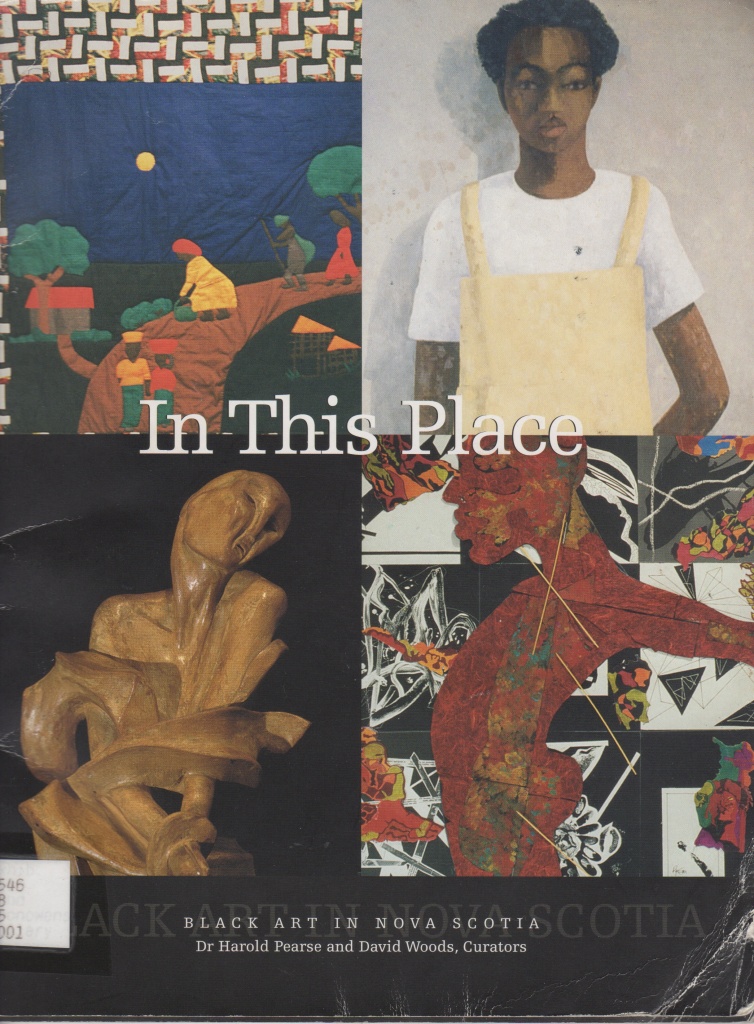
Catalogue cover for “In This Place: Black Art in Nova Scotia”
Rasmussen was an undergraduate student when he wrote his unpublished thesis, and felt compelled to look deeply into In this Place…, which included racial inclusion and exclusion at NSCAD. In so many ways I feel that the change he was hoping for has been very slow in the last 20 years. For example Rasmussen cites a group called MOSAIC, lead by NSCAD faculty member Letti Beals, which formed at NSCAD in the early 1990’s. MOSAIC was for international and Canadian students of colour. The group had laid out eight goals of the club that included proposals to expand the European dominant Art History department, establishing a file cabinet that collected books, videos, articles and slides relevant to the group, and a group exhibition of the people in MOSIAC. Only one goal was achieved in the form of a 17-person group show in the Anna’s galleries I and II in the fall of 1993. Rasmussen writes in his thesis: “These goals however, were cut short when organizer, Lettie Beals was dismissed from her administrative position at NSCAD.” In the last couple years, almost 24 years after MOSIAC, the students have established a POC (people of colour) collective. I cannot help but wonder how having MOSIAC and Beals at NSCAD for the past two decades might have changed the representation of the faculty and student body, as NSCAD’s feminist collective has done for women over the years: the university now has a female president and high numbers of celebrated female alumni, students and faculty.
Discovering this document and connecting with Meril, has changed my view of Halifax’s art scene. My ignorance to the quiet history of racialized tension and the rich history of African Nova Scotians in visual art has been revealed to me, and I have begun to feel more educated on more of Nova Scotia’s art history. In our final emails Meril and I started making plans to discuss the whole situation of finding his paper and the lasting impact of In this Place… during a panel discussion this summer hosted by Visual Arts Nova Scotia (Stay tuned!). He signs off with “But as you see, this material is a potential tool for needed transformation and if you can connect it with the right people, it could all have legs.” I am filled with his contagious inspiration to share information.
In this time, when Canadians continue to be more and more aware of the ongoing oppression facing people of colour within the larger societal institutions such as justice and law enforcement, we within the art community must look to our own institutions. I believe that first step comes in knowing our histories and critically examining our own past of exclusion and white supremacy as a way to make sure we are not continuing it. In researching the exhibition In this Place, it was difficult to find written information around the histories of Black exhibitions, artists and curators in Nova Scotia—even about one of it’s most famous. So, inspired by Meril’s paper and his desire to share information, I’m working to make more of this information available online (such as Meril’s thesis which is online here now).
And for anyone looking to learn more about exhibitions featuring black artists in Nova Scotia in the past 20 years, I’ve starting compiling an incomplete list below—Let us know what I’ve missed in the comments!
Skin: A Political Boundary (1998), Curated by Pamela Edmonds and Meril Rasmussen
SisterVisions III: Through Our Eyes (2000), Curated by Pamela Edmonds
Cultural Memory (2000), Curated by Pamela Edmonds
Home: The Art of Preston (2000), Curated by David Woods and Dr. Harold Pearse
Black body: Race, Resistance, Response (2001), Curated by Pamela Edmonds
Lucie Chan : Something to Carry (2002) Curated by Ingrid Jenkner
Secret Codes Quilt Exhibition (2012), Curated by David Woods
The Hair Show: Honouring Our Roots: Viola Desmond (2016)
Inspire (2014), Curated by David Woods
Stitched Stories:The Family Quilts (2016), Curated by Shauntay Grant
Check out these other blog posts from our researcher as she digs through our archives:
Get to know our research intern
In this Place: The lasting impact of Nova Scotia’s first major exhibition of Black artists’ work



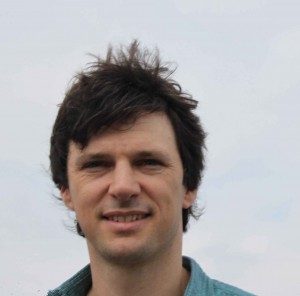

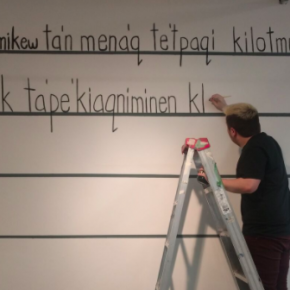
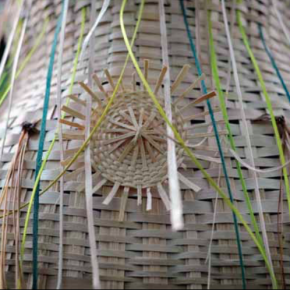
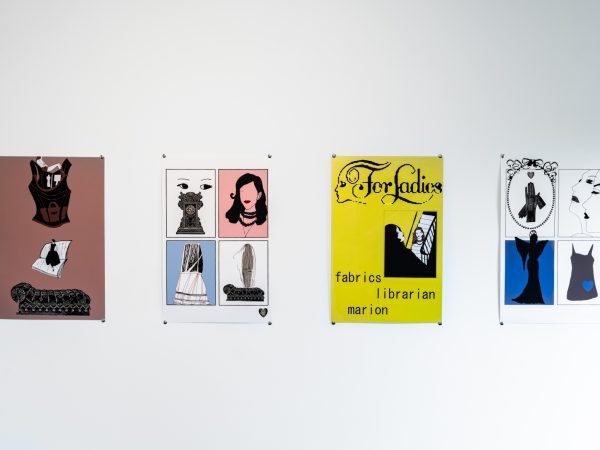
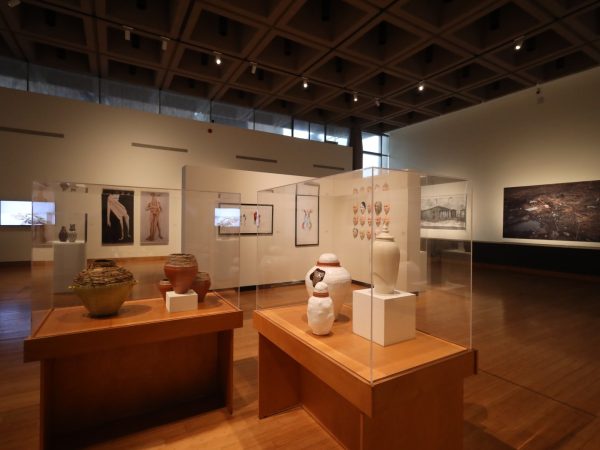


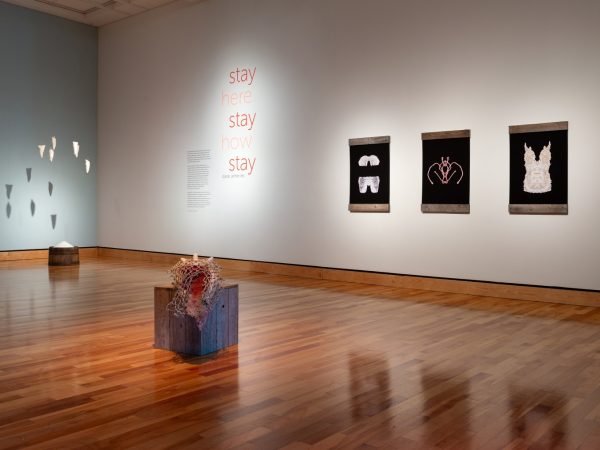
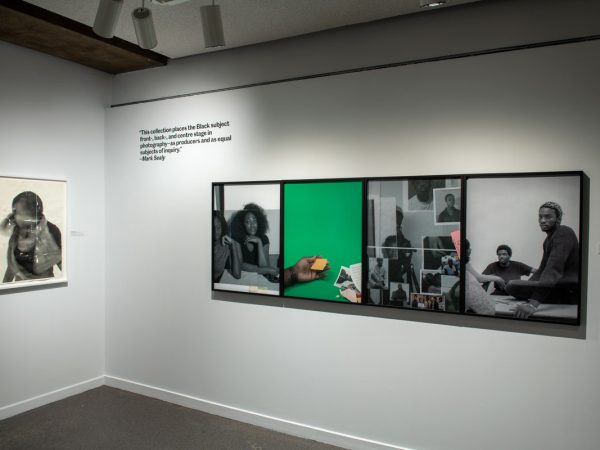







Great work Chris. Keep on. Interesting to see how your search is finding its own direction.
a really lovely and fascinating read. Thanks for the research, a lot to follow up on and consider in Nova Scotia history.